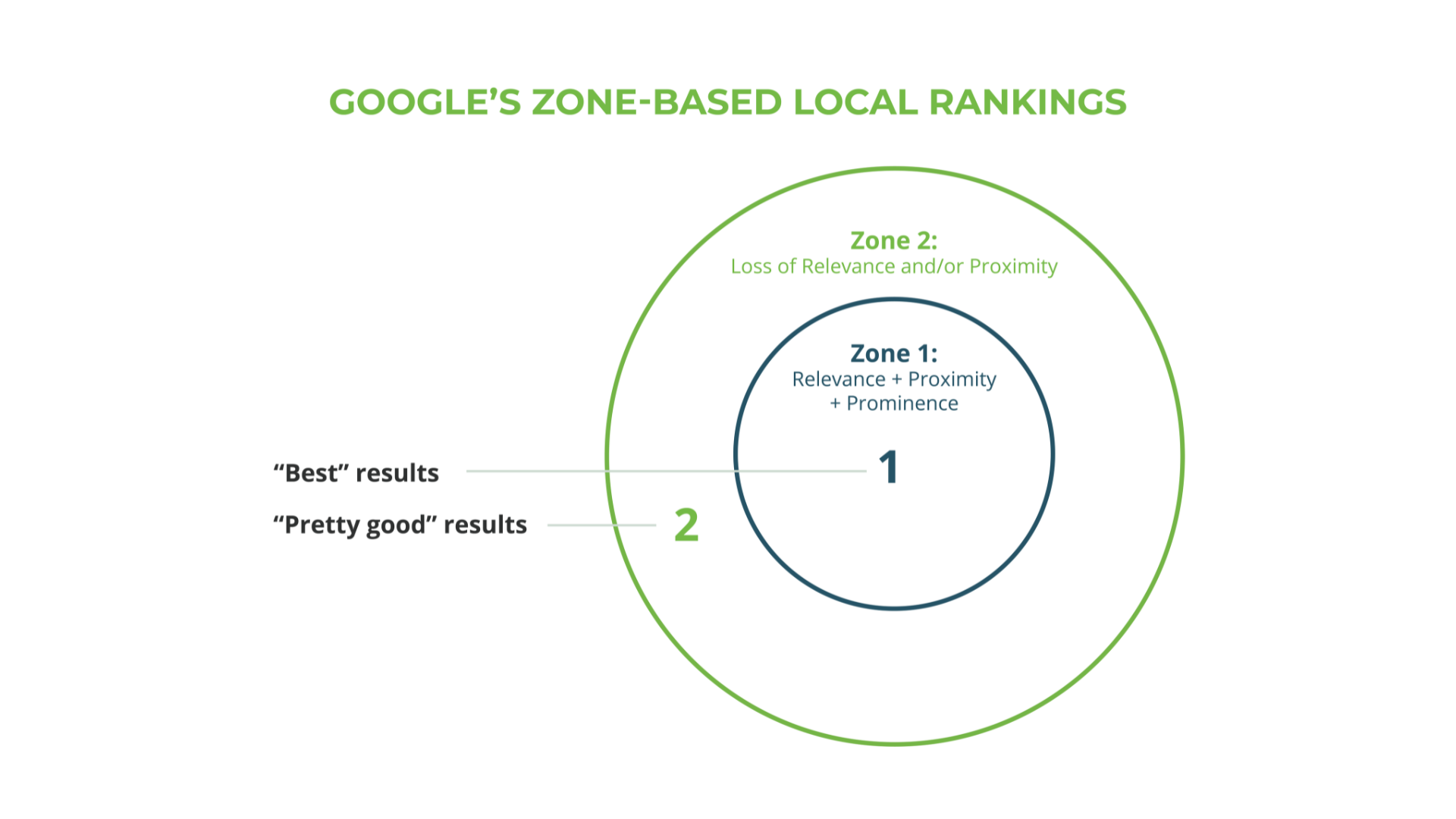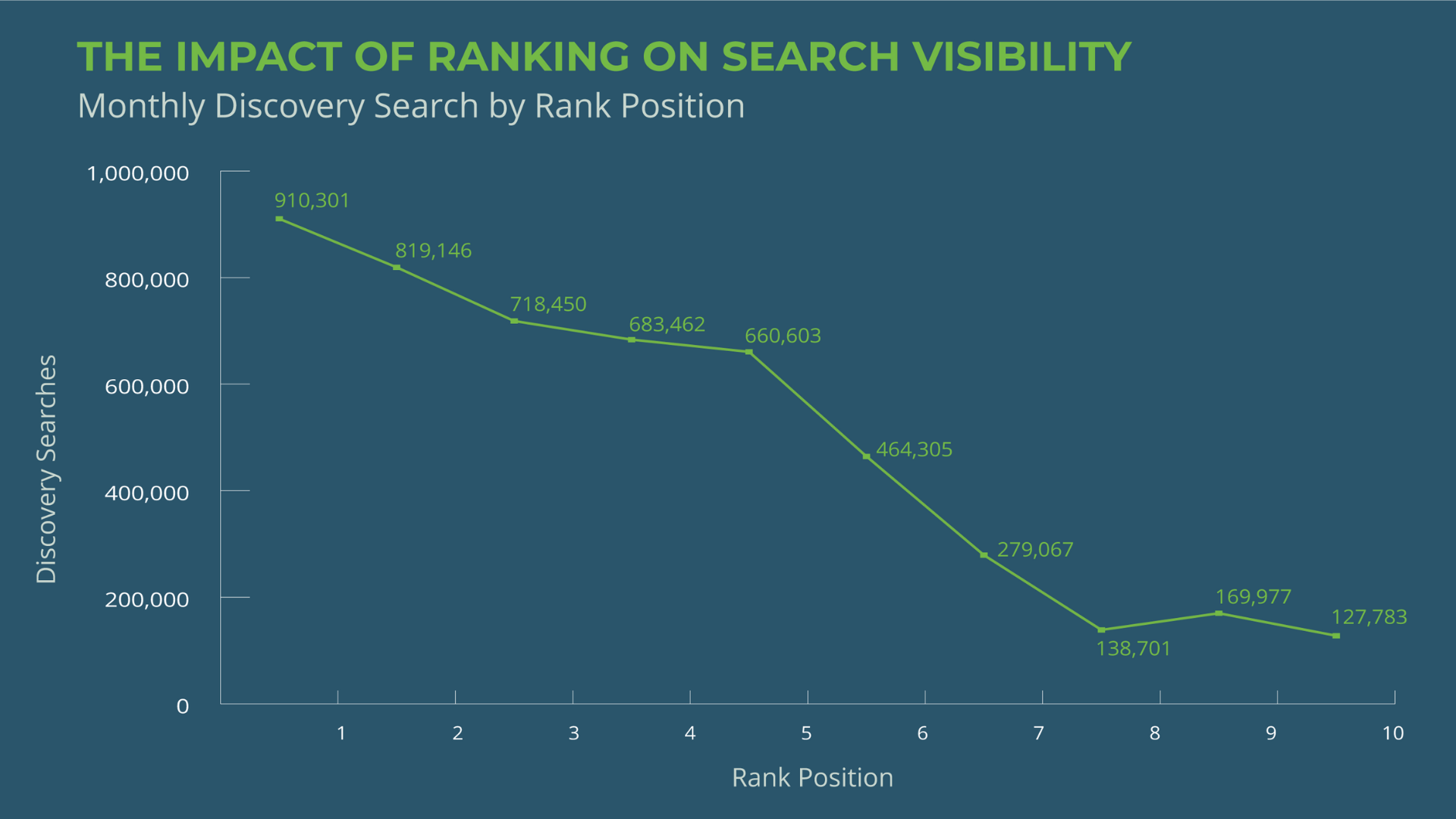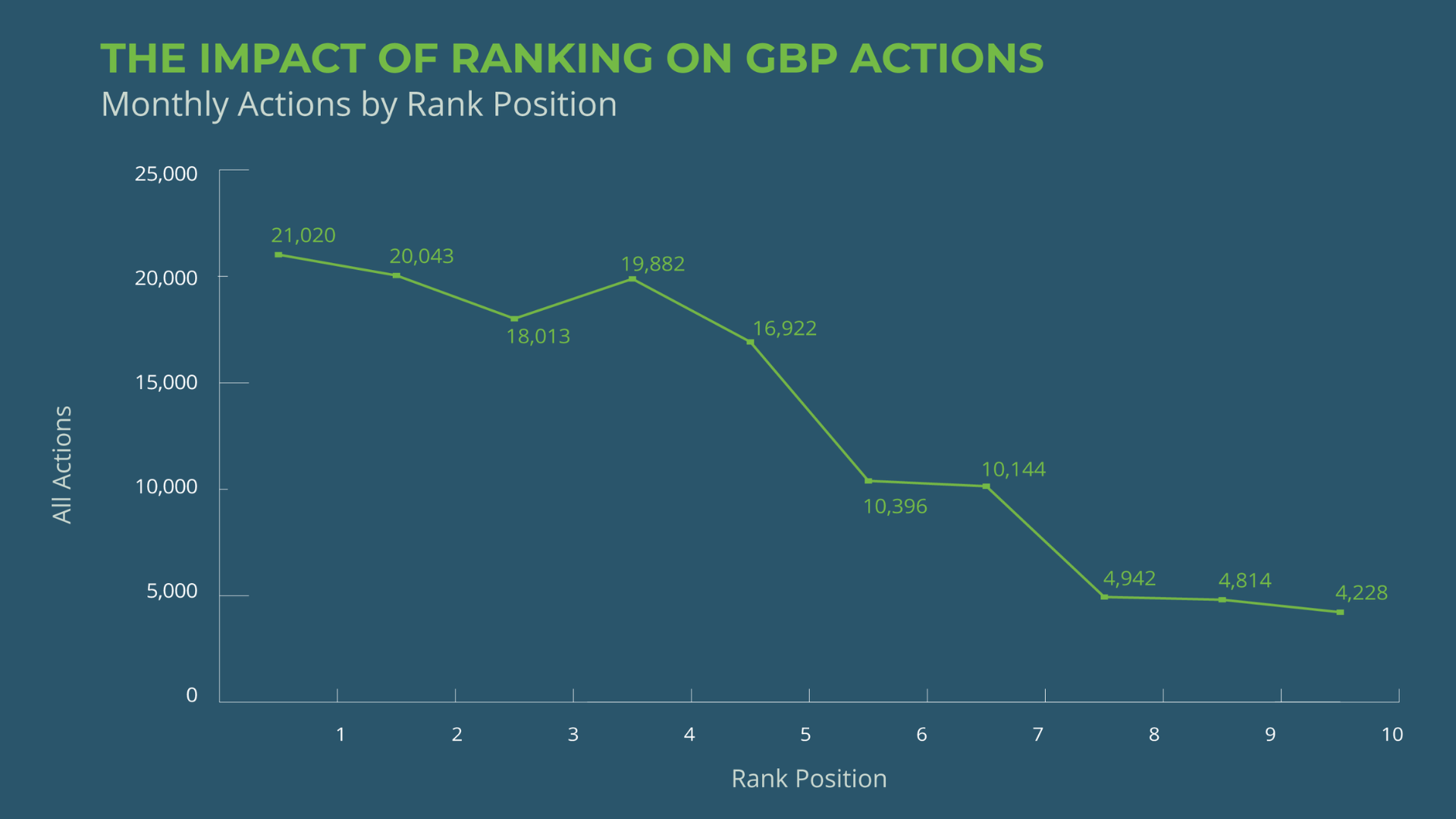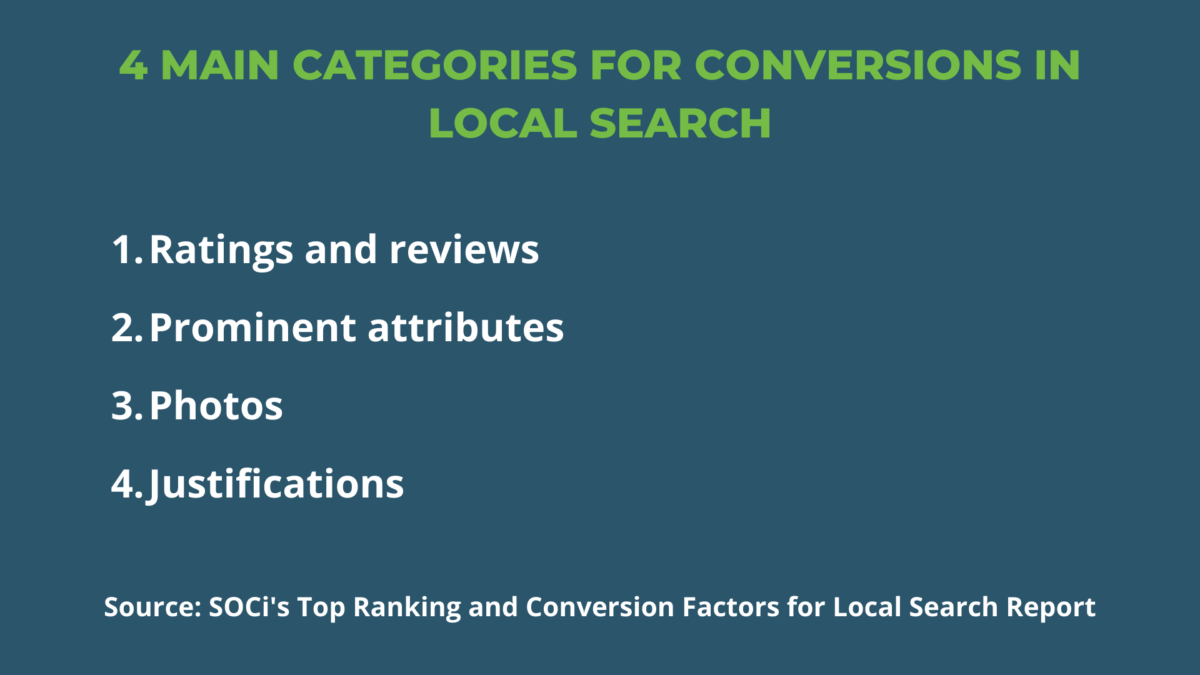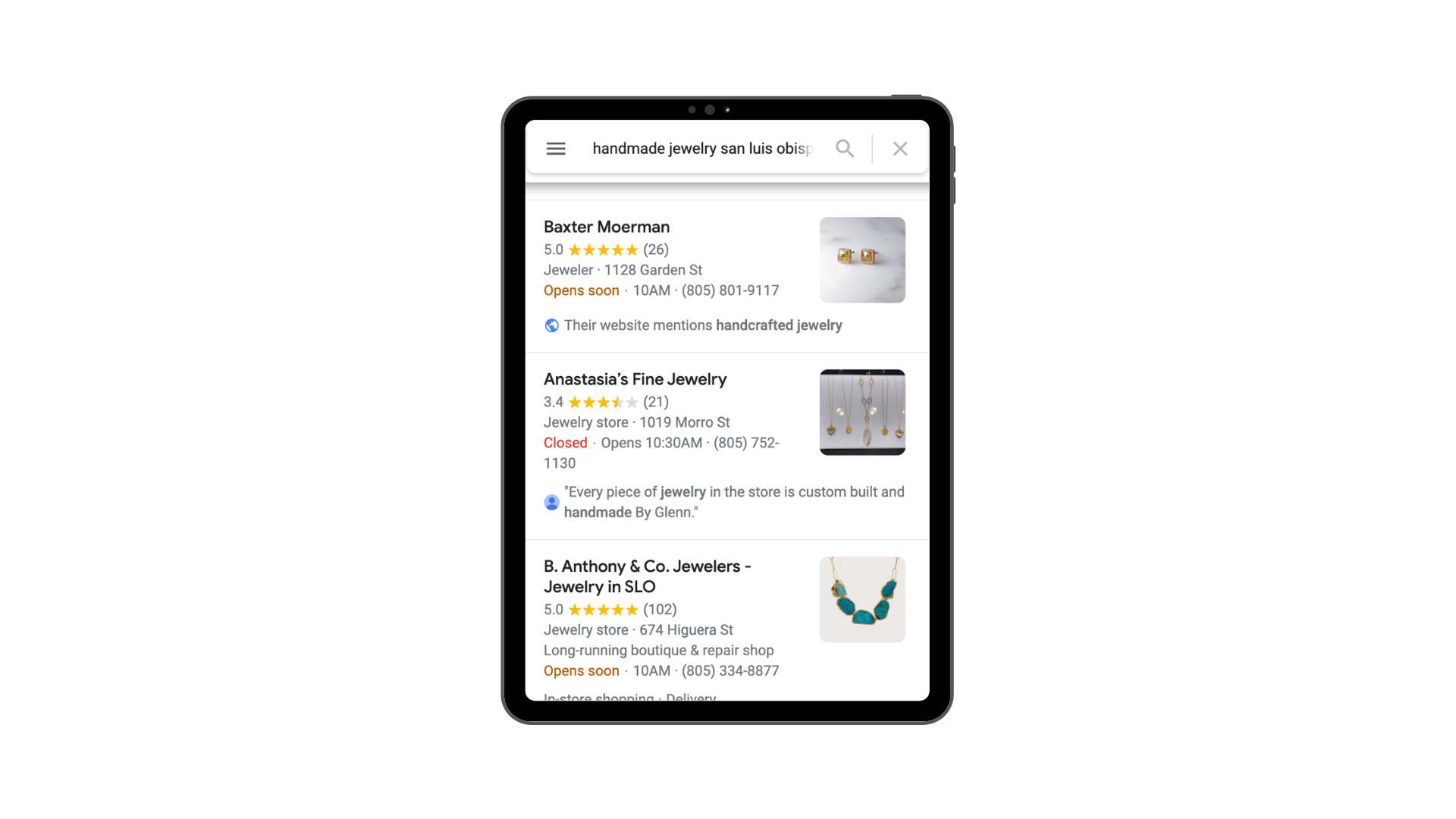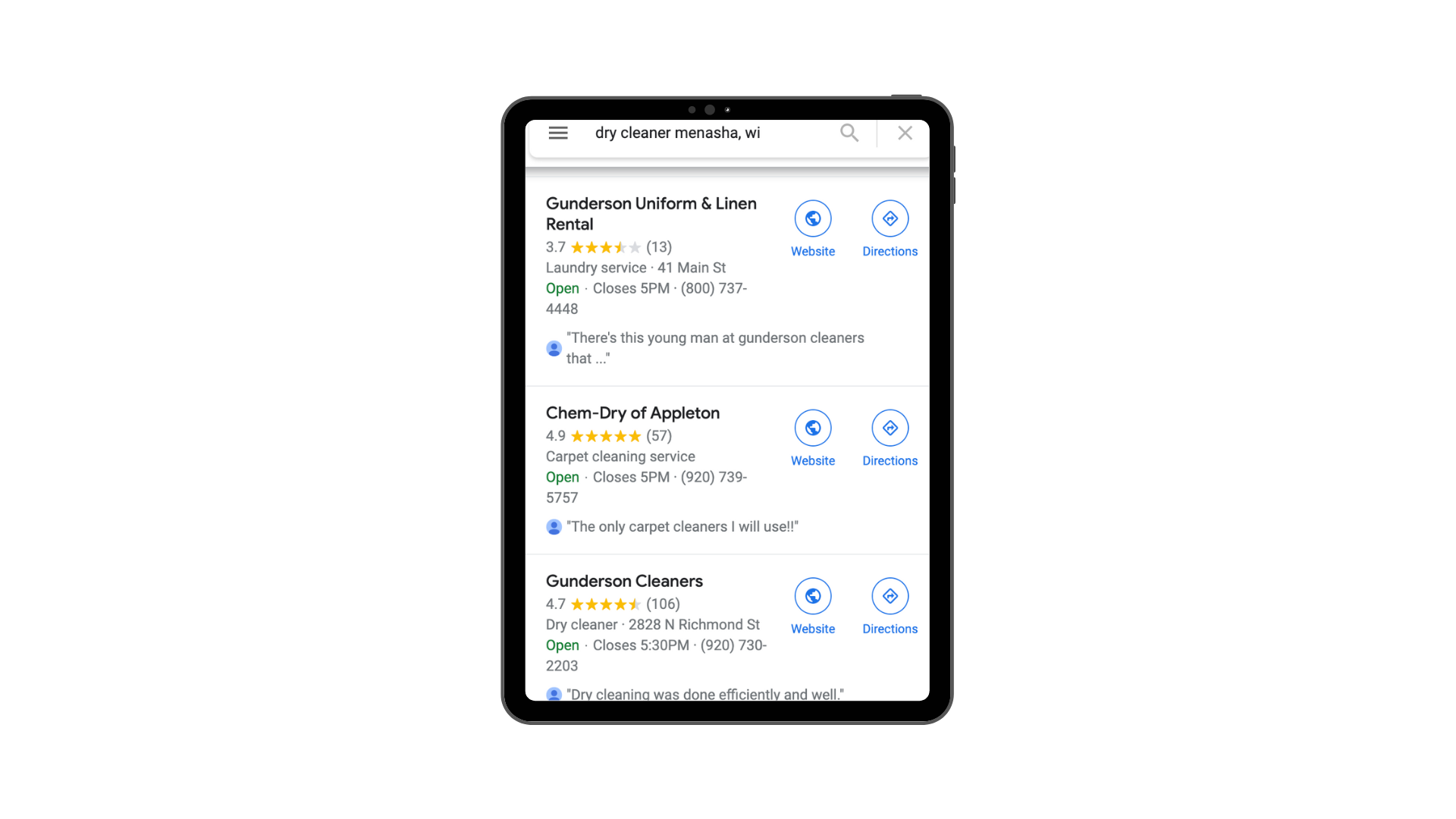Top Findings From Our Local Search Ranking and Conversion Factors Report
Today, 74 percent of consumers conduct local searches at least once a week, and 56 percent visit a business right after searching. Our most recent report, the Top Ranking and Conversion Factors for Local Search, looked to quantify the impact of high-rank position in Google local searches in two meaningful ways: search traffic and customer interaction.
We examined approximately 300,000 Google business listings and tapped into 8.6 million local search results to find relevant statistical trends. For more information on how we created our report, head to our methodology section.
Here are a few of the report’s key takeaways:
- Businesses listed in Google’s 3-Pack will earn 126 percent more traffic in the form of Discovery Searches than businesses ranked 4-10.
- Businesses listed in Google’s 3-Pack also earn 93 percent more Actions (phone calls, website visits, requests for directions) than businesses ranked 4-10.
- Businesses ranked number one in local searches contain an average review count of 404.
- The average star rating for all positions from 1-20 on Google hovers around 4.1 stars.
- 44 percent of local results contain a featured photo in the summary listing.
We’ll dive more into the data and what it means later in this blog, but for the complete Top Ranking and Conversion Factors for Local Search Report, click the download button below!
A Deeper Look Into the Impact Ranking Has on Local Visibility
How Local Ranking Works on Google
Before we discuss how rankings impact your multi-location business’s local visibility, it’s essential to explain how local search rankings work.
According to Google’s help documentation, relevance, distance, and prominence are the three main factors for ranking in local search.
- Relevance is how well a local Business Profile matches what someone is searching for.
- Distance considers how far each potential search result is from the location of the user searching.
- Prominence refers to how well-known a business is.
Ideally, your business wants to be in Zone 1 or the “best” results, which contains all three factors (relevance, proximity, and prominence). The next best option is to be in Zone 2 or the “pretty good” results, which means you’ve lost some relevance and/or proximity.
The Impact Rankings Have on Search Visibility
The report examined data from approximately 300,000 Google business listings and derived meaningful correlations between local rank and the volume of the Discovery Searches as well as three types of Action (Phone calls, website visits, and requests for directions).
Discovery Search
A Discovery Search is a Google metric that measures when “a customer searches for a category, product, or service that you offer, and your listing appears.” Discovery Searches are local searches such as “sushi near me” that don’t include a brand name.
The chart below represents the correlation between a business’s local rank position and its monthly discovery search appearance. As you can see, there’s a direct correlation between a business’s rank position and number of monthly Discovery Searches.
In fact, multi-location businesses within Google’s 3-pack earn 126 percent more traffic in the form of Discovery Searches than businesses ranked four through 10.
Actions
Discovery Search traffic is excellent, but does it translate to business Actions, which are phone calls, website visits, and requests for directions?
Our research reveals that multi-location businesses ranking in the Google 3-Pack will earn 93 percent more Actions than businesses ranked four through 10. Moreover, the top-ranking business receives on average 24 percent more Actions than ranking fifth, and nearly 400 percent more than those ranking tenth.
Which Factors Impact Conversions and How to Optimize for Them
Google has increasingly focused on providing signals in search results that demonstrate relevance and prominence to consumers. The search engine is keen on supplying additional information to its users, depending on the nature of a search, that is pulled from various places in the business profile, website, and elsewhere.
Below are the four main categories that multi-location businesses should focus on to increase their local search conversions.
1. Reviews and Ratings in Top Results
Google has long featured a business’s average rating and review count in its summary local search results. Reviews and ratings influence both ranking and conversion, making them a critical focus point in any local strategy.
Our research revealed that the average star rating across all rank positions from one through 20 hovers around 4.1 out of 5 stars — meaning that multi-location businesses must acquire a high average star rating to be competitive in search.
In addition to having a high average star rating, your multi-location business needs a lot of reviews to be competitive. According to our data, a higher than average review volume seems to indicate a local business has the potential to achieve position one or two. The top-ranked business had an average review count of 404 reviews; while the second-ranked business had 375 reviews, with three through five having between 280 and 283 reviews.
Actionable takeaway: Download our Multi-Location Marketer’s Guide to Online Reputation Management to increase the number of positive reviews your multi-location business receives and create a strong review response strategy.
2. Frequency of Prominent Attributes
Google Business Profile attributes allow business owners to identify specific services, features, products, and other qualities that describe their business.
We found that attributes appear with remarkable frequency with 43 percent of listings in rank positions one through 20 displaying at least one prominent attribute. The most common attributes are in-store shopping, delivery, curbside pickup, dine-in, take-out, and no-contact delivery.
Most attributes do not directly influence local search rankings. However, it’s fair to say that it’s best practice to enable all relevant attributes in your Google Business Profile (GBP) to show consumers what you offer and help with your GBP’s completeness, which is a local SEO ranking factor. Also, attributes call out desirable services and therefore help your listing convert more searchers into customers.
Actionable takeaway: For any service feature you offer, make sure to enable the relevant attributes in your GBP.
3. Prevalence of Photos
The incidence of photos in Google search is relatively high. We found that 44 percent of local results contain a featured photo in the summary listing. Photos are exceptionally prominent for restaurant and retail brands, and in all local results when searching on a mobile device.
However, only 3.4 percent of photos in GBPs were uploaded by the merchants — a shockingly low number. This statistic is worth noting because photos uploaded by Google users might not accurately reflect the best aspects of your local business.
Actionable takeaway: Upload your own professional photos to better control and influence how online users first perceive your local business.
4. An Abundance of Justifications
Justifications are snippets of information that Google shows in the Local Pack to help explain, or justify, why a business is showing up for a specific search. Justifications can come from reviews, Google Posts, service attributes, website content, product listings, menus, Google Q&A, etc.
The most common justifications are reviews. Reviews appear a whopping 92 percent of the time when Google decides to display a justification. Reviews are followed distantly in popularity by service attributes, website snippets, and menu highlights. However, our study focused on justifications showing for highly popular search queries like “restaurants near me”; long-tail searches are much more likely to feature other justification types.
Actionable takeaway: It’s vital to double down on receiving positive reviews on Google. They help to increase your search rank and will often appear in your GBP’s justifications. You can optimize for other justification types by creating Google Posts, answering Q&A, adding service attributes to your profile, and other methods.
Best Practices
Google is interested in helping consumers quickly identify the right business for their needs. Your multi-location business cannot control whether the information snippets mentioned above will appear in search results. However, you can help to ensure that your local listings stand out from competitors when these increasingly common features do appear.
Here are four best practices to optimize your local listings and boost online visibility:
1. Respond to reviews using keywords you’d like to rank for. These responses aren’t eligible for justifications, but the keywords used may indirectly prompt other reviewers to use the same language.
2. Enable all attributes that apply to your business, emphasizing prominently displayed attributes like in-store shopping, delivery, and pickup.
3. Upload professional photos of the products and services you want to rank for, and refresh photo content regularly as you update products.
4. Ensure that your products, services, and service features are eligible to be showcased in justifications by:
- Creating keyword-optimized Google Posts
- Responding to users’ questions or seeding your own question and responses in Google Q&A
- Listing all relevant service features for your business
- Linking local landing pages to your GBP and optimizing them for product and service keywords
If you’re a multi-location business looking to improve its local search rankings, consider using SOCi’s products and services. Specifically, SOCi Listings and Local Pages and Locator are designed to improve your local search rankings and visibility and can help create brand consistency across all locations.
If you’re interested in seeing how your brand’s visibility fares across business locations, try our Snapshot now!
Methodology
To create our Top Ranking and Conversion Factors for Local Search Report we examined insights data from approximately 300,000 Google business listings. For our search features by rank sections, we tapped into a larger dataset of approximately 8.6 million local search results. For these, we focused on high-volume queries based on a wide range of Google primary categories.

